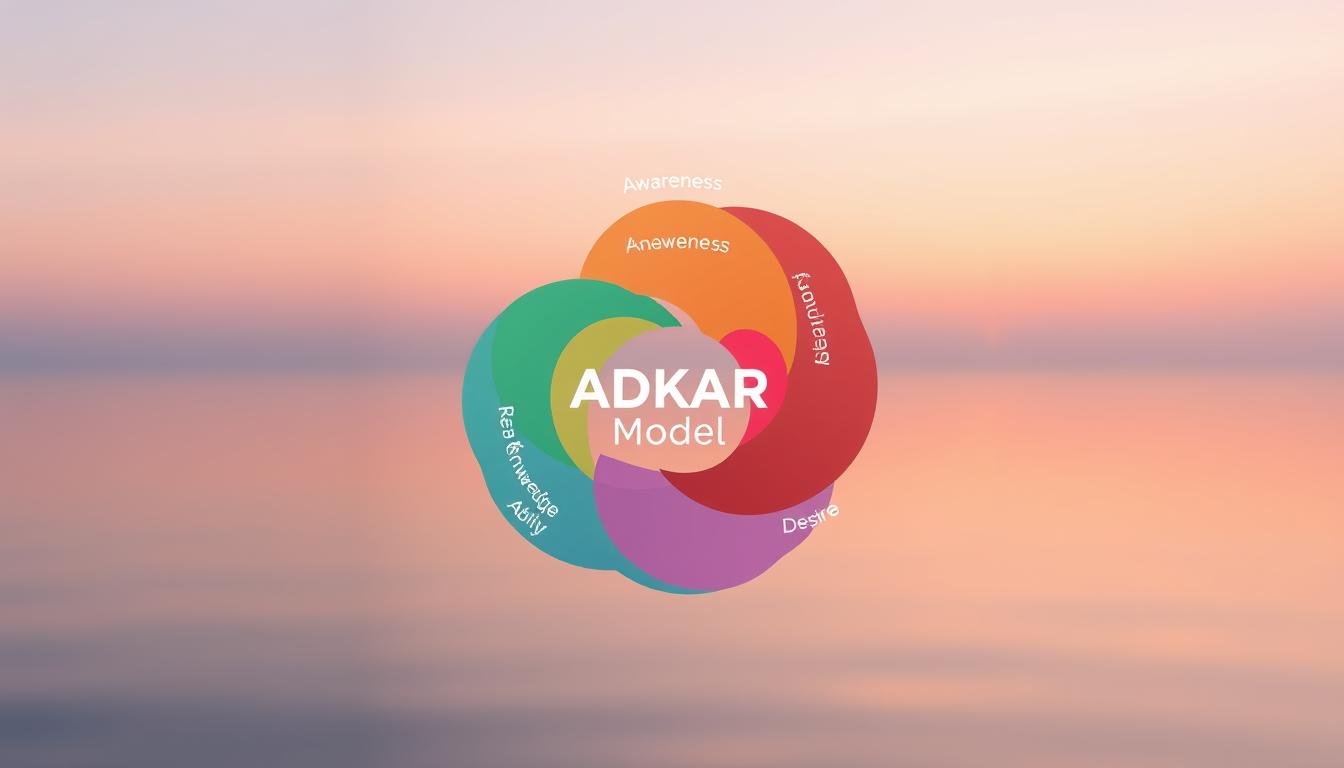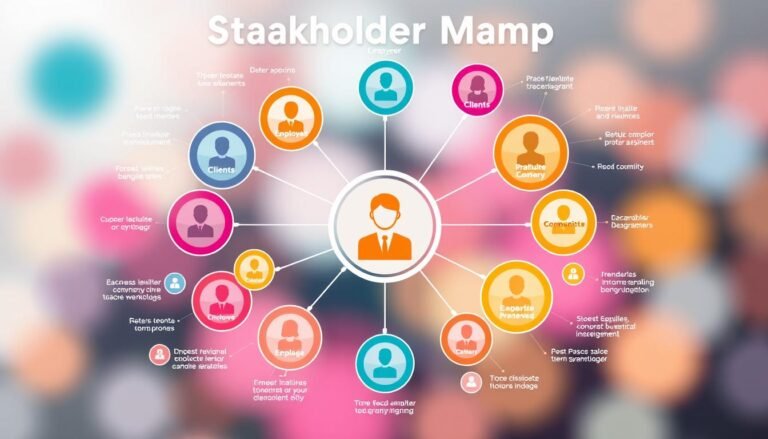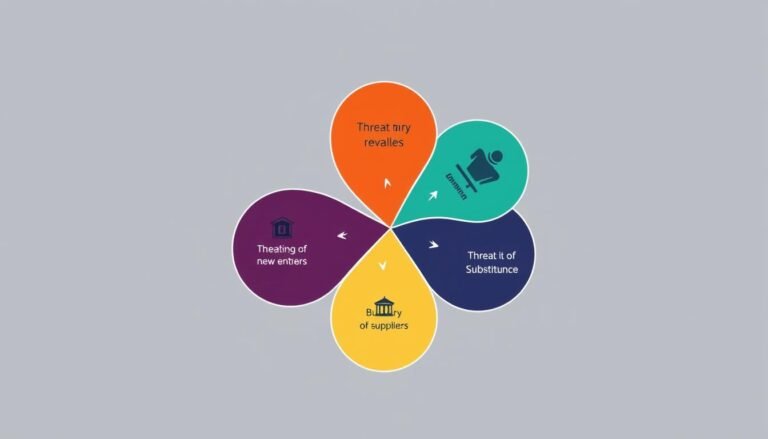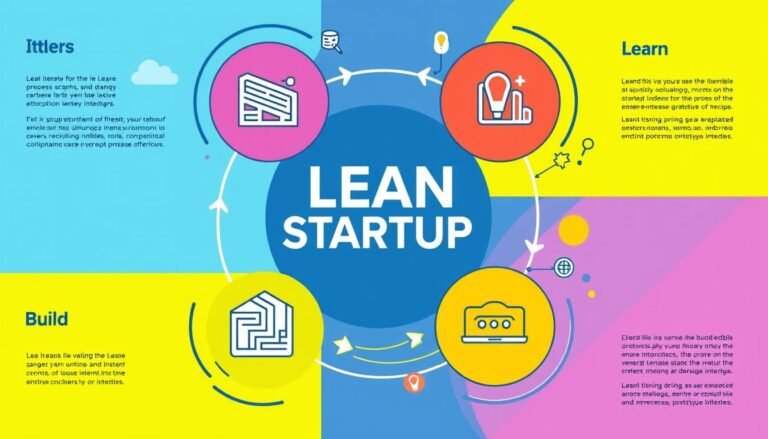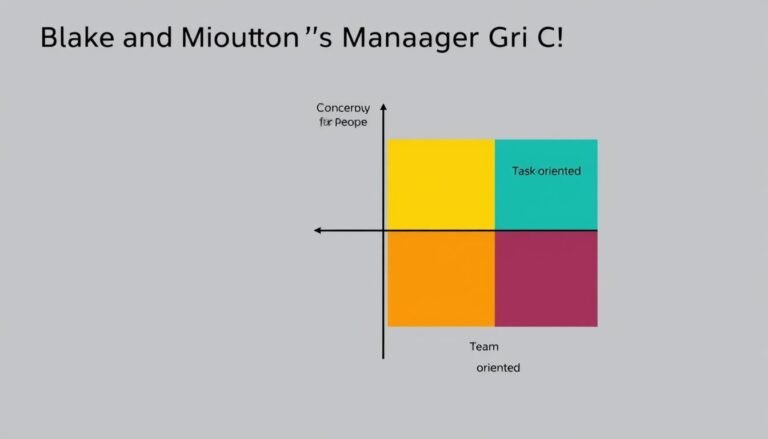ADKAR Model: A Guide to Successful Change
Can the success of your organization’s change efforts really depend on understanding the mental shifts of your team? The ADKAR Model is a top choice for managing change. It focuses on how people go through change. Jeffrey Hiatt, the founder of Prosci, created it after studying many organizational changes.
This model is all about personal motivation and learning new skills. It shows a clear way to handle change in your organization. You’ll learn how awareness, desire, knowledge, ability, and reinforcement help make change successful.
We’ll also talk about why managing change well is key. Plus, we’ll look at the hurdles organizations face. This will show you why helping employees through change is just as important as the technical side.
Key Takeaways
- The ADKAR Model focuses on individual transitions to effectively manage organizational change.
- Desire, as a personal decision, presents a significant challenge in the change process.
- Most organizations overemphasize the technical side of change, neglecting the human element.
- Knowledge is crucial for effective change management, requiring tools and skills.
- Reinforcement is necessary to ensure changes are sustainable and recognized.
- Prosci’s ADKAR Model has been extensively tested and is widely used in various industries.
- Organizations may choose different frameworks based on culture, values, and change complexity.
What is the ADKAR Model?
The ADKAR Model offers a structured way to handle change in companies. It helps teams understand their roles and the reasons behind the change. This framework moves people from just knowing about change to fully supporting it. Knowing about the ADKAR Model makes it easier to adapt to changes without much resistance.
Overview of ADKAR Framework
The ADKAR Model stands for Awareness, Desire, Knowledge, Ability, and Reinforcement. It shows how each step is crucial for successful change.
- Awareness: Recognizing the need for change.
- Desire: Fostering a willingness to support the change.
- Knowledge: Understanding how to make the change happen.
- Ability: Implementing the necessary skills.
- Reinforcement: Sustaining the change over time.
Using the ADKAR Model helps companies create clear messages to build awareness. It’s known for starting and keeping changes going well.
Origins and Developer of ADKAR
Jeff Hiatt created the ADKAR Model in 2003, while leading Prosci. Today, it’s one of the top change management methods supported by Prosci. Companies like Microsoft use it to help customers and spot challenges. The ADKAR Model is also used in USAID to help with changes in partnerships. It focuses on making people aware and wanting change.
Understanding the Importance of Change Management
Organizations must adapt and grow in a fast-changing world. A strong Change Management Process helps them do this well. It’s not just about following steps; it deeply affects how employees handle changes. By focusing on Employee Change Management, companies can tackle both the practical and emotional sides of change.
Why Change Management Matters
Good change management helps new ideas stick. When leaders explain why changes are needed, employees get why they must adapt. Questions during the Awareness phase often are:
- ‘Why is change management necessary and why now?’
- ‘What’s wrong with the way we are implementing changes today?’
- ‘What will happen if we don’t use change management?’
Research by Prosci shows that strong change management makes initiatives seven times more likely to hit their goals. Moving from “poor” to “fair” change management can almost triple the chance of success. Having support from top leaders is key, as they help push change forward within the company.
Challenges in Managing Organizational Change
Even with its benefits, change management faces hurdles. Employees might worry about losing their jobs, redoing their work, or handling new costs unfairly. It’s important to address these issues to help employees through changes smoothly.
Using the ADKAR model—Awareness, Desire, Knowledge, Ability, and Reinforcement—is crucial. This approach helps organizations:
- Make the need for change clear through open communication.
- Help employees overcome personal fears and see the positives of change.
- Give the tools and training needed to gain knowledge and skills.
Key Components of the ADKAR Model
The ADKAR Model is a key tool for handling change in companies. It has five main parts, each crucial for helping people adjust to change. Knowing these components is vital for leaders who want to make transitions smooth and reduce pushback.
Breaking Down the ADKAR Acronym
The acronym ADKAR means Awareness, Desire, Knowledge, Ability, and Reinforcement. Each part is important for the change process:
- Awareness: Recognizing the need for change.
- Desire: Building a motivation to support the change.
- Knowledge: Understanding how to implement the required changes.
- Ability: Developing the necessary skills for change implementation.
- Reinforcement: Ensuring sustained change through continuous communication and support.
How the Components Work Together
The ADKAR Steps are meant to be followed one after the other. Starting with Awareness and Desire creates a strong base. This leads to sharing Knowledge, which helps employees learn how to change.
Then, Ability makes it easier for them to accept the change. Finally, Reinforcement keeps the change going by keeping up the communication and celebrating wins. Research shows that companies do better when they really talk to their workers and listen to their worries.
This open communication cuts down on resistance a lot. It makes the ADKAR steps work better together.
ADKAR Model Steps Explained
The ADKAR Model Steps offer a detailed plan for managing change in companies. It’s key to grasp each step for successful implementation. Here’s a clear explanation of each step in the process.
Step 1: Awareness of the Need for Change
The first step is to make people aware of why change is needed. It’s important to explain the reasons clearly, like market changes or new tech. This helps employees see the need for change and prepares them for it.
Step 2: Desire to Support the Change
It’s crucial to make employees want to support the change. Keeping them informed and involved helps a lot. Strong leadership also plays a big part in making them willing to change.
Step 3: Knowledge of How to Change
Teaching people how to change involves training and giving them tools. Sharing knowledge through social learning is important. This way, employees get the skills they need to do their new jobs well.
Step 4: Ability to Implement Required Skills
This step is about giving people the chance to practice what they’ve learned. It’s important to boost their confidence and help them get past obstacles. This ensures they can make the changes smoothly and work better.
Step 5: Reinforcement to Sustain Change
The last step is about keeping the change going. It’s vital to keep supporting people, celebrating their successes, and listening to their feedback. This keeps them from going back to old ways, making the change a lasting part of the company.
Implementing the ADKAR Model in Your Organization
Starting the ADKAR Model needs a clear plan. It’s important to talk openly and involve employees at every step of the Change Management Process. First, look at how ready your organization is for change. Then, find out where people might resist the change.
Practical Steps for Implementation
Here are some steps to make the ADKAR Model work:
- Conduct a readiness assessment: Check how ready your organization is for change. Spot where people might resist early on.
- Engage leadership: Make sure top leaders and managers support and help with the change. This shows how important it is.
- Provide training and education: Give employees the skills and knowledge they need. Use training, self-study, and mentors, as the ADKAR model suggests.
- Establish feedback mechanisms: Have regular meetings to hear what employees think. Keep an eye on how they’re doing with the change.
Measuring Success and Progress
It’s key to measure how well the Change Management Process is working. Use a 0-5 scale for employees to rate their awareness and readiness for the change. Try to get a score of 3 or higher, showing they’re okay with the change.
Use success metrics to see how well the change is doing. A 2019 study by Prosci found that 47% of employee resistance could be lessened with good change management. This shows the importance of having a solid plan and checking on progress often.
It’s vital to keep up the good work to make changes last. The British Journal of Health Psychology says it can take about 59 days to make a new habit. Keeping support and resources going will help employees feel sure and able in their new roles. This makes for a better work environment after the change.
Advantages of Utilizing the ADKAR Model
The ADKAR Model has big benefits for both companies and workers. It makes understanding and starting change easier. It has proven its worth in many areas, like making companies more efficient, updating technology, and improving processes.
Benefits for Organizations and Employees
Companies that use the ADKAR Model see less pushback against change. Workers get more involved because they see why change is needed. The main perks are:
- Enhanced Communication: The model stresses clear talking at each step.
- Increased Employee Engagement: It focuses on what each person can do, making them more invested in the change.
- Ability to Measure Success: Companies can track progress well, spotting areas to get better.
- Culture of Adaptability: The model helps build a culture that learns and adapts to future changes.
Real-World Applications of the ADKAR Model
The ADKAR Model shows its strength and success in real life. For instance, when big tech changes happen, companies use it to make sure teams know and can handle the shift. Some key places it’s used include:
| Application Area | Example | Outcome |
|---|---|---|
| Organizational Restructuring | Company-wide reorganization | Less employee leaving and better mood |
| Technology Implementation | New software adoption | Quicker uptake and better skill in using it |
| Process Improvement | Streamlining operations | More efficiency and lower costs |
Common Misconceptions about the ADKAR Model
It’s important to understand the ADKAR Model’s limits and how it compares to other frameworks. Critics say it might not work well in all company cultures. The model is popular but not perfect for every situation. It shows the importance of choosing the right Change Management Models.
ADKAR Versus Other Change Management Models
When looking at the ADKAR Model versus others, each has its own purpose. Some companies might prefer models like Kotter’s 8-Step Process or Lewin’s Change Management Model. The ADKAR Model might be too structured for places needing quick changes or flexibility. Knowing the differences helps leaders make better choices.
When Not to Use the ADKAR Model
There are times the ADKAR Model doesn’t fit well. Companies in fast-changing environments might find it hard to use. In these cases, looking at other methods that offer more flexibility is key. The ADKAR Model works best where clear processes and structured plans are important.
Conclusion
The ADKAR Model is a powerful tool for handling change in the workplace. It focuses on how each person changes, not just the company. It highlights the key steps: Awareness, Desire, Knowledge, Ability, and Reinforcement. This method helps get employees on board, making it easier for companies to adapt and grow.
Using the ADKAR model tackles issues like resistance and resource gaps. It also builds a culture of ongoing improvement. When leaders support and reward change, it boosts team morale and creates a positive work culture. The ADKAR framework gives companies the tools they need for successful change management.
As businesses face constant changes, using the ADKAR Model is key. It helps match change efforts with what employees want and need. This approach leads to lasting success and improvement for the company.
Source Links
- The ADKAR model of change: The ultimate guide to leading organisational change
- Effective Change Management with the ADKAR Model
- What Is the ADKAR Model for Change Management? (2024)
- What is the ADKAR Model of Change Management?
- Applying the ADKAR Model When Change Management is New
- Winning over hearts and minds at work: ADKAR my favorite change management approach
- ADKAR model: From theory to practice
- Using the ADKAR Change Management Model
- From Awareness to Reinforcement: A Step-by-Step Guide to ADKAR Change Management
- The ADKAR Model, explained
- Implementing organizational change with the ADKAR model – LogRocket Blog
- The ADKAR Model: Understanding the Pros and Cons of Change Management
- What is ADKAR MODEL? | Pros and Cons of the ADKAR Model
- Change Management Myths
- 4 Common Misconceptions about user adoption and change management – AmeXio
- 4 Common Misconceptions about User Adoption and Change Management
- ADKAR Change Model
- Mastering Change: A Deep Dive into the ADKAR Change Management Model
- ADKAR Change Model – An Evaluation of Its Strengths and Weaknesses

